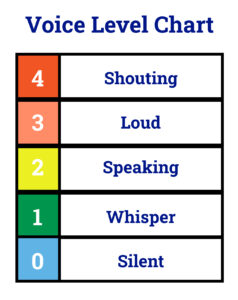What is a Social Story?
Social Stories are a popular intervention strategy created by Carole Gray in 1989. They are used to teach children, adolescents, and adults with autism spectrum disorder (ASD) different social situations by describing and explaining appropriate behavior and providing examples of an appropriate response (Gray, 1989; Saad, 2016). They are individualized to fit each person’s needs and can help provide support and clarity in new and sometimes confusing social experiences by preparing the individual for what to expect (Ozdemir, 2008). They are also written at the appropriate reading level for each individual and from their perspective using first-person language (Gray & Garand, 1993; Gray, 2000a). Social Stories are an effective resource to use across many settings because they are cost-and-time efficient, easy to write and apply, and are a known and widely accepted intervention by practitioners, teachers, and families (Barry & Burlew, 2004; Crozier & Tincani, 2005; Delano & Snell, 2006; Gray Center, 1998; Ozdemir, 2008).). Social Stories are a great way to set expectations of what will occur and what is expected of the individual behaviorally.
How to Create a Social Story
Step 1 – Target Skill
Select a situation in which a social story may be appropriate. This may be going to new place (e.g., museum), teaching a skill (academics or social skills), introducing changes and new routines (e.g., change in hygiene routine), going to an environment that is familiar, but where there have been behavioral challenges in the past, or a place familiar to the individual, but there is a novel entity or disruption in the normal schedule (e.g., field trip, holiday party). Social stories can be used for a variety of situations and there is not a ‘one answer fits all’ in terms of why you may create one.
Step 2 – Story Structure
- After the target skill has been decided, as authors, we are going to begin writing the Social Story. We need to first determine the individual’s comprehension level, the perspective of the individual and the overall goal of what we would like them to accomplish after reading the story (Gray, 1998b). We want to write the story at the individuals’ comprehension level or slightly below. When writing, we are going to use a combination of descriptive, directive, and perspective sentences using first-person language (Gray & Garand 1993). A good rule of thumb for writing social stories is a ratio of 1 directive sentence for every 2-5 descriptive and/or perspective sentences (Gray, 1998b).
- Directive sentences- Directly define what is expected of the individual as a response to a given cue or situation. These types of sentences can guide the individual in the right direction of expected behaviors. Typically, these types of sentences will start with “I can” or “I will”. For example, “I will open the car door. I can climb into my seat. I will put my seat belt on.”.
- Descriptive sentences tell the individual what they should be doing and potentially a reason why they should be doing it. We are ‘setting the scene’ for the individual. When writing descriptive sentences, we want to use sentences stated in a format that expresses what they should be doing rather, then what not to do. In Safety-Care, we also learn about prompting using a “do” request rather than a “don’t” or “stop” request. Focus on what the individual should be doing instead of what they should not be doing. For example, “I will walk to the car. Walking in the classroom keeps me and my classmates safe.”, instead of “I will not run”.
- Perspective sentences are used to describe the thoughts, reactions, and/or responses of other people. For example, “My mom will be happy that I buckled my seat belt and put my feet on the floor.”
Example
Let’s look at an example. For this situation, we are preparing an individual to ride to the grocery store & setting expectations of appropriate vehicle safety/behaviors while riding in the vehicle-
Car Ride to the Grocery Store
It is time to go to the grocery store! (Descriptive)
Mom and Dad need food to make meals for me and my baby brother, Matt. (Descriptive)
I will put on my shoes. (Directive)




Sometimes it is cold outside. (Descriptive)
Mom will check the weather before we go to the store. (Perspective)
If mom says it is cold, I will put on my coat and hat. (Directive)



When mom says it is time to go, I will walk to the car. (Perspective/Directive)
Mom will open the door for me. (Perspective)
I can climb into the car and put my seat belt on. (Directive)
It is important to keep my seat belt on, so I don’t get hurt. (Descriptive)


The ride to the grocery store only takes a few minutes. (Descriptive)
While we are driving I get to see other cars and lots of buildings. (Descriptive)
I will keep my voice low in the car. (Directive)

While I am driving, mom might turn on the radio. (Perspective)
I can ask mom to put on a song I like, to turn off the music, or I can put my headphones on. (Directive).


Once we get to the grocery store, mom will let me know I can take off my seatbelt. (Perspective)
I will unclip my seat belt and wait for mom to open the door. (Directive)
Once mom opens the door, I will grab her hand and we will walk into the store. (Perspective/Directive)
My family will be so proud of me for being safe in the car! (Perspective)


Step 3 – Visuals
Photographs of the actual individual or generic images may be included in the creation of the Social Story. However, we want to make sure we include an assortment of photos that show variations. Thinking back to our Social Story on car safety, let’s say we put a picture of the individual’s family’s car in the book. The individual may think the rules and behaviors we are attempting to highlight only apply if we are in that specific car. So, include a variety of picture of vehicles that the individual may ride in if including them in the Social Story. For some individuals, images may be distracting from the actual message or may make the individual inaccurately understand the content (Gray & Garand 1993). If this is the case, you can feel free to omit visuals.
Common Mistakes
While writing our Social Stories, we want to make sure we remain objective and not assume the reaction of the individual, which is a common mistake for authors (Gray & Garand 1993). For example, we should write, “The family travels to the grocery store.” instead of “The family has not much fun traveling to the grocery store!”.
Implementation
There are many ways to introduce and teach the Social Story to the individual. Usually, an instructor will introduce the story by reading it to the individual at least twice. The instructor may also record them reading the Social Story through audio and tell the individual when to turn the page. The instructor may also video record themselves reading the Social Story. It will be vital to check for comprehension while introducing the story. This may be a done by a short quiz afterwards (verbally or written). Social stories may also be paired with roleplay to practice behavioral expectations and prepare the individual for what to do in a new situation more explicitly (Gray & Garand 1993).
Conclusion
Social Stories are a great option for preparing individuals for new or common experiences and setting expectations of behavior, routines, and overall, what is expected of them. Gray & Garland (1993) states it best, writing social stories is an art, not a science. The most important part of writing a Social Story is going to be knowing your individual, understanding their learning style, and using creativity to create a story that best supports your individual’s needs and independence.
About the author

Kelly graduated with her bachelor’s degree from Northern Illinois University & her master’s degree from Trinity Christian College. She currently holds her LBS2/PEL & is a BCBA/LBA. She has worked as a special education teacher across the Chicagoland area working with individuals aged 5-22 with developmental, intellectual, & physical disabilities. She has also worked on the island of Oahu as an in-home clinician & provided services through Telehealth all across the United States supporting individuals with ASD and behavioral challenges. Kelly has been a Master Trainer with QBS since March of 2023 and has enjoyed sharing her passion of educating on safe & ethical practices for de-escalation to a larger audience
References
Barry, L.M., & Burlew, S.B. (2004). Using Social Stories to Teach Choice and Play Skills to
Children with Autism. Focus on Autism and Other Developmental Disabilities, 19(1), 45-
51. https://doi.org/10.1177/10883576040190010601
Crozier, S., & Tincani, M. J. (2005). Using a Modified Social Story to Decrease Disruptive
Behavior of a Child with Autism. Focus on Autism and Other Developmental Disabilities,
20(3), 150-157. https://doi.org/10.1177/10883576050200030301
Delano, M., & Snell, M. E. (2006). The Effects of Social Stories on the Social Engagement of
Children with Autism. Journal of Positive Behavior Interventions, 8(1), 29-42.
Gray, C.A & Garand, J. D. (1993). Social Stories: Improving responses of students with autism
with accurate social information. Focus on Autistic Behavior, 8(1), 3-10.
Gray, B. (1989). The Pathways of My Research: A Journey of Personal Engagement and
Change. The Journal of Applied Behavioral Science, 25(4), 383-398.
https://doi.org/10.1177/002188638902500406
Gray, C. (1998b). The Advanced Social Story workbook. The Morning News: 10, (2), 24-page rip-out insert.
Gray, C. (2000a). Writing Social Stories with Carol Gray [Video and accompanying workbook].
Arlington, TX: Future Horizons
Ozdemir, S. (2008). The effectiveness of social stories on decreasing disruptive behaviors of
children with autism: Three case studies. Journal of Autism and Developmental Disorders, 38, 1689-1698.
Saad, M.A.E. (2016). The effectiveness of social stories among children and adolescents with
autism spectrum disorders: Meta-analysis. International Journal of Psycho-Educational Sciences, Vol. 5, Issue (2), September- 2016, 51.